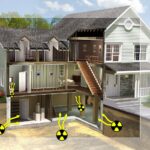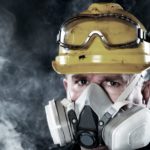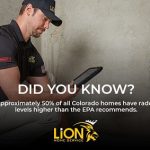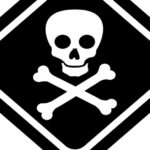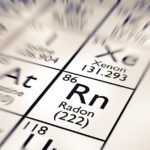So you’ve had a radon test, now what?
Measuring radon levels in a home or building is key to protecting the health of anyone breathing the air, but interpreting those levels is not quite as exact without a radon test. As they say, everything is relative, and what is an acceptable radon level to one state or country may differ from what is acceptable to another. This is influenced by numerous factors including the type of rocks and soil beneath a building, ventilation and duration of time spent in the building.
One thing remains certain: radon can cause cancer. In fact, approximately 21,000 people die from radon-related lung cancer every year in the United States. That alone should be the reason to find out if you, or your family, is being exposed to excessive levels of the dangerous gas. Radon levels in the home need to be monitored daily as the levels fluctuate over time. So its best to test every 2 -3years and monitor any changes over time.
The World Health Organization recommends that countries adopt reference levels of the gas of 100 Bq/m3 (Becquerel per cubic metre). If this level cannot be implemented under the prevailing country-specific conditions, WHO recommends that the reference level should not exceed 300 Bq/m3.
Radon level measurement units
Radon is generated by the radioactive decay of radium, an element which was originally discovered in 1898 by Pierre Curie, Marie Curie and G. Bemont. Radioactive elements are unstable, always in a constant struggle, deciding whether to hold onto all of their atomic energy in the nucleus or release some of it. That “decay” of the nucleus releases radiation.
One curie is equal to the radioactivity of one gram of radium, which decays at 2.2 trillion disintegrations per minute. Sounds fast, doesn’t it? It also sounds small, right? Read on.
Picocuries per liter of air, or pCi/L, which is one of the preferred measurements for the speed of decay in radon, is equal to one trillionth of a curie, abbreviated as pCi. The pCi unit is used in the United States because it is required by federal law. Just about everywhere else that uses the metric system, including the World Health Organization, measures in Becquerels. 1 pCi/L is equal to 37 Bq/m3.
The Becquerel unit, abbreviated Bq, is named after founder Henri Becquerel. The preferred radon level measurement unit is Becquerels per cubic meter, Bq/m3. One Becquerel equals one radioactive disintegration per second.
Is there a Safe radon level?
The best radon level measurement would be zero. Unfortunately, that’s not possible. The average global outdoor radon level varies between 5-15 Bq/m3, equal to 0.135-0.405 pCi/L. For every 99.9 Bq/m3, or every 2.7 pCI/L increase in long term radon exposure, lung cancer risk rises 16%. The thing to remember is that the lower the level, the lower the risk. As radon gas can accumulate indoors, it is important to monitor routinely.
The World Health Organization states that the majority of lung cancers are caused by low to moderate radon concentrations due to the fact that a fewer number of people are exposed to very high indoor concentrations. A concrete answer to ‘what is a safe radon level’ is highly disputable. Zero would be the natural answer, except that radon is a naturally occurring, radioactive gas that is in the air all around us. It is unavoidable, hence the need for routine radon testing , as its colorless, odorless and invisible, only through monitoring will you be aware of the levels in the air.
Depending on the country, acceptable radon levels vary. A generally accepted action level established by the World Health Organization, the WHO, is 100 Bq/m3, or 2.7 pCi/L. Homes or structures measuring higher are advised to take remedial action to lower radon levels. The WHO further advises an upper limit that should not be exceeded at 300 Bq/m3, or 8 pCi/L.
In the United States, the Environmental Protection Agency action level of 4 pCi/L is the standard, a little higher than that of the WHO. It is also thought that reducing levels to sub-4.0 p/Ci would cut yearly cancer deaths from radon in half.
Areas known to have high radon levels
It is important to remember that in most cases, high radon levels can be fixed easily and simply. Whether it is following easy radon reduction tips, increasing ventilation, or contacting a radon mitigator, radon gas levels can be improved dramatically.
Radon gas occurs everywhere around the world. Escaping from the breakdown of uranium in igneous rock and underground water, radon gas seeps up to the earth’s surface. The gas is odorless, colorless, and tasteless, so it is difficult to detect.
High radon levels have been detected in every country, in just about every location on the planet. In Colorado, about half the homes have radon levels higher than the U.S. Environmental Protection Agency recommended action level of 4 picoCuries per liter (pCi/L).
Airthings created radonmap.com to offer everyone the opportunity to get a sense of the radon levels in their area. It is free to use, updated daily.
It is important to remember, however, that as the gas accumulates indoors, it is necessary to ensure that an individual building or home has safe levels. The only way to know for sure is through routine radon testing.




